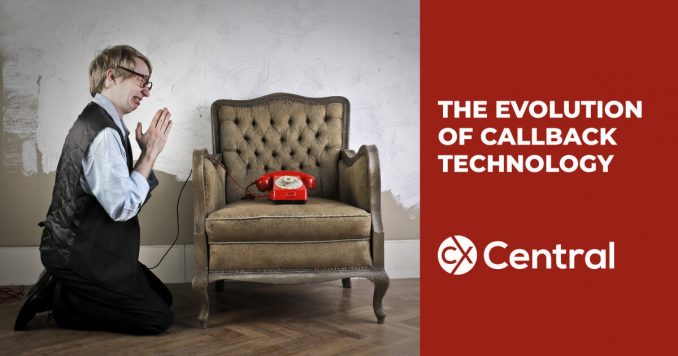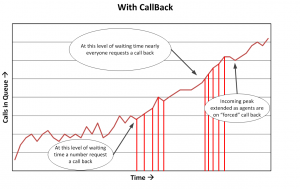
The evolution of callback technology in contact centres
As with most aspects of life, contact centres change and evolve over time.
A brief outline below will cover the changes of callback technology – from callers in the past being subservient to the call centre, and now customers wanting to be the masters of their own time, their decisions and communication choices.
The frequently talked about Customer Experience (CX) is very much with us and getting this right for your customers is no longer an option for the modern contact centre.
It’s essential for business survival.
The callback technology early days
In the early days of contact centres (call centres at the time), callers rang and were not informed of the extent of the waiting time.
Then with the introduction of IVRs callers were sometimes informed if the waiting time was longer than expected.
Normally the IVR message stated: “Your call has been placed in the queue and you will be answered by the first available operator”.
Then over time, some contact centres added: “You are number xx in the queue” etc.
The caller was still totally subservient to the call centre.
Callers could either hold and wait or they could hang-up.
Fifteen years ago
The world was introduced to callback technology via software that would virtually hold your place then an Automated Callback would be made to you at the time that you would have otherwise been answered.
Before that, you either waited or hung up.
No other communications options were available between the customer and the provider unless you visited their office in person.
So a virtual hold capability at that time was a sensible option.
Now 15 Years Later
The consumer has much higher expectations and many options as to how they may choose to communicate and they certainly do not want to be subservient to a machine.
They want to be well informed of all of their communications options and in charge of their own time and their communications choices.
A customer does not want to look up your number, call the number and then be told by an IVR machine that the current waiting time is 17 minutes.
So I asked the question: “Why do people nominate for a callback?”
It is because the waiting time is too long (as a result of the inbound traffic being more that the agents are currently coping with.)
Therefore if you request a callback all you are doing in effect is reducing the number of agents that are taking inbound calls because the callback machine will “grab” an agent (often several) and force-feed them with answering outbound connected calls.
So heavy inbound traffic (hence the request for the callback) now has even fewer agents available to take the load and the incoming wait time blows out even further even when the call rate stays the same.
 Some interesting industry facts
Some interesting industry facts
- 26% of callbacks do not get to the required recipient – so send them a reminder and let them call when it best works for them
- 18% of callbacks interrupt something more important that the topic of the callback
These both are considerably large numbers and can be avoided.
Over 58% of callers are on your web-site when they are talking to your contact centre (Genesys)
New callback technology solutions can include:
- Providing potential callers with details of all of your communications options and their availability at that moment in time. More specifically it should be actively encouraging them to use your lower-cost online services.
- Avoiding them having to call and then be informed that you have high incoming traffic – let them know before they even pick up their phone.
- Allowing them to receive a reminder when the waiting time is shorter (again without having to pick up their phone) and when it suits their other activities they can call knowing the waiting time will be short.
- Letting them know details of the possible reason they may want to call you at that time, e.g. “The gas is off in High St New Town and will be restored at 3pm today” – they will not need to call at all.
- Highlighting your current available on-line communications options so as to actively encourage them to use these lower-cost options.
- When they have requested a shorter waiting time reminder, automatically keeping them informed.
- Your CC supervisors and managers will be well informed of the number of reminders awaiting notifications. This can also be added to your WFM system as a live feed of short term demand.
- If your CC is not manned at a given time letting them know before they pick up their phone and offering them a single click to be reminded when it opens.
The above steps will considerably improve your customer experience, smooth out your inbound traffic (with the associated staff benefits), avoid callers all ringing about a known situation that is in hand and help get more potential callers on to your online services.
With new callback technology software on the market, today all of the above can be done with a very light IT touch and no changes to your call centre setup, configuration and general operation.
So what are you waiting for?
Recommended Links:

